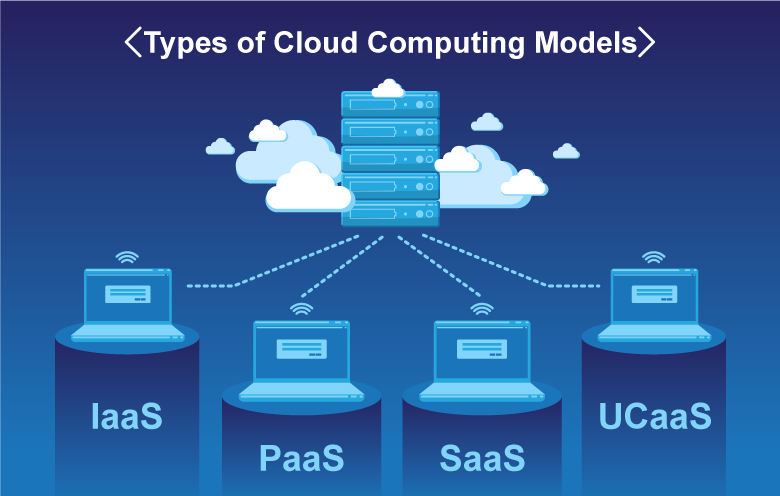Achieve Seamless Scalability With Cloud Services
In the ever-evolving landscape of cloud services, achieving smooth scalability stands as a keystone for modern businesses looking for to stay affordable and adaptable. The mission for smooth scalability with cloud services introduces a world of possibilities for those eager to embrace the transformative power of dynamic resource monitoring.
Benefits of Cloud Scalability
Cloud scalability uses companies the versatility to dynamically adjust resources based upon demand, making sure optimum performance and price efficiency. One essential benefit is the ability to scale sources up or down quickly in action to fluctuating workloads. This agility allows organizations to meet altering consumer needs without over-provisioning resources, eventually causing set you back savings. Scalability likewise improves efficiency by ensuring that systems can deal with boosted website traffic or work without experiencing downtime or stagnations. By successfully assigning sources, companies can keep high degrees of efficiency throughout peak times without unneeded expenses throughout quieter durations. Additionally, cloud scalability advertises technology and trial and error by allowing companies to conveniently test new concepts and range them as needed. This flexibility encourages a society of continual enhancement and adjustment, making it possible for companies to remain competitive in a quickly developing market landscape. Ultimately, the benefits of cloud scalability extend beyond expense financial savings to incorporate improved efficiency, agility, and innovation.
Secret Attributes for Scaling
Reliable scaling in cloud solutions depends on crucial features that enable companies to change sources dynamically based on need. One necessary feature for scaling is flexibility, enabling resources to scale up or down in response to rising and fall workloads. This guarantees that companies can meet efficiency requirements without over-provisioning resources. Another crucial feature is scalability, making it possible for systems to deal with increased work by adding sources flawlessly. This attribute is vital for fitting growth without jeopardizing efficiency. In addition, automation plays an important duty in scaling by automating the provisioning and de-provisioning of resources based upon predefined policies. Automation lowers human intervention, improves performance, and guarantees quick response to changing demands. Tracking and analytics devices are also necessary for scaling, providing insights right into resource use, performance metrics, and possible traffic jams. These devices make it possible for organizations to make educated decisions and enhance source allocation for effective scaling. Generally, these vital features collectively equip organizations to achieve smooth scalability in cloud services.
Executing Auto-Scaling Methods
To effectively maximize source allocation and adapt to differing work, organizations must strategically apply auto-scaling strategies in their cloud solutions infrastructure. Auto-scaling enables systems to automatically readjust the number of compute resources based upon real-time demand. There are numerous auto-scaling methods that companies can utilize, such as predictive scaling, which uses historical data to anticipate future resource demands, and reactive scaling, which reacts to present workload changes.

Best Practices for Scalability
For organizations aiming to improve their scalability in cloud services, executing finest methods is crucial for optimal efficiency and resource administration. One secret ideal technique is designing applications with a microservices style. This technique breaks down useful link applications into smaller, independent solutions that can be deployed, upgraded, and scaled individually, permitting for better adaptability and scalability.
One more essential practice is using containerization innovation, such as Docker or Kubernetes. Containers make it possible for the product packaging of applications and their dependencies into separated devices, making it simpler to scale elements separately and release them constantly throughout various settings.
Additionally, implementing automated implementation and infrastructure as code (IaC) can improve scalability initiatives (linkdaddy cloud services). Automation tools like Terraform or Ansible assistance in provisioning and taking care of resources successfully, decreasing hand-operated errors and allowing rapid scalability
Moreover, monitoring efficiency metrics, establishing signals, and conducting routine ability preparation are necessary practices to make sure aggressive scalability management. By adhering to these best methods, companies can achieve smooth scalability in their cloud services while maximizing efficiency and resource usage.
Surveillance Efficiency Metrics
When analyzing the effectiveness of cloud solutions scalability, very closely keeping track of efficiency metrics is imperative for guaranteeing ideal functionality and resource allotment. By continuously tracking key performance indicators (KPIs) such as reaction times, latency, throughput, and source utilization, organizations can acquire important insights into the wellness and performance of their cloud facilities. Monitoring performance metrics enables the early discovery of possible traffic jams or concerns that might influence scalability, enabling aggressive procedures to be taken to resolve them before they rise.

Verdict
In final thought, achieving smooth scalability with cloud services is crucial for companies to maximize efficiency, boost Read More Here technology, and preserve high performance degrees throughout peak times. By leveraging the benefits of cloud scalability, executing auto-scaling methods, using crucial attributes such as elasticity and automation, and following ideal techniques like application style and efficiency tracking, companies can successfully scale their systems while optimizing resource application and efficiency.
The mission view for seamless scalability with cloud solutions reveals a world of opportunities for those ready to accept the transformative power of dynamic source management.
Cloud scalability offers organizations the versatility to dynamically readjust sources based on need, guaranteeing ideal efficiency and cost performance. Another vital function is scalability, making it possible for systems to deal with raised workload by including resources perfectly.For companies intending to improve their scalability in cloud solutions, executing ideal practices is vital for optimal efficiency and source management.When analyzing the effectiveness of cloud solutions scalability, closely monitoring efficiency metrics is necessary for ensuring optimal functionality and source allocation.
Comments on “LinkDaddy Cloud Services Press Release: Announcing New Characteristic and Enhancements”